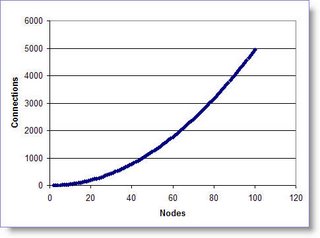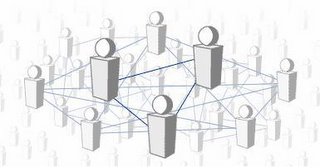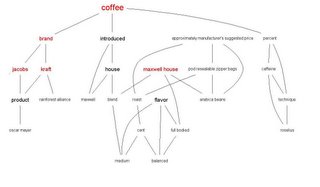
The weekend - so some longish blather... if you'd like to hear more screaming than the night the orphanage burned down start with
Nick Carr's most recent post
To be honest I'm not sure what all the screaming is about - although I appreciate Carr's tough questions! A body of information (e.g Wikipedia) is not homogenous - a great proportion of the contributions will be commonplace. Similarly, so called numbskulls (ref Carr's choice of language) can contribute much of the mundane - and even some of the arcane. At the edges, without question, there is a need for highly qualified experts to define the most complex subjects. Basically the world looks like this (diag.)-

At last count Wikipedia had 50,000 contributors responsible for 2.9 million entries, 890,000 in English - however, only 2,081 had contributed 100+ articles. This is being interpreted as maybe bad news if the Wikipedia model is what is to be expected in corporations. But, guess what, this is not much different than you might expect. Let's say the average "habitual" contributor is responsible for about 100 articles - a total of 208,100 articles. This is approximately 23% of the 890,000 total - inline with the above guess of about 25%. A small number of contributors are doing a lot of work but apparently the system overall depends on numbskulls for 70%+ of contributions.
It goes without much saying that we all look forward to a time when online communities will be more like our networks in the real world. This vision may never be fully realized but it seems clear that the next stage, the next proof point, in the development of social networks will be in the context of corporations -so called Web 2.0 for the enterprise. This begs some tough questions: can Social Networks really produce tangible improvements in resource conservation, productivity, or competitive advantage? How will this work and, for a generation imbued with
MySpace,
Yelp,
Digg,
del.icio.us,
Wikipedia etc., what will it look like?
Predictions -
1.
Starting Now. We are currently navigating the “Trough of Disillusionment” of the hype cycle for social networks, corporate wikis and blogs, and we are beginning to see real corporate traction – the next 12 months will be both interesting and exciting. We all still have a lot of work to do but there is light at the end of the tunnel! Corporations are already intrigued by the possibilities of Social Networks and related tools in the context of disruptive events – the introduction of new products, for example, or bringing new facilities online, mergers and acquisitions, and disaster preparedness. Using Social Networks for mentoring and expertise sharing for complex products is available only in a few places although this seems to an extraordinarily valuable application area.
2.
Solutions not Components. Companies need solutions that integrate with their existing business processes and that carefully take into consideration any new risks that they may create. New ways of capturing content will be valuable only in so far as they tangibly enable downstream processes. Almost certainly the Legal department will want to be involved – if blogs are to be shared with external readers there must be publication approval processes and clear rules of engagement; wikis must be devoid of personal references to other employees etc. In short, by building features that offer security and conform to well established business standards it becomes more probably that social networking tools will be accepted.
3.
A little top-down will go a long way. For god’s sake never forego an opportunity to convince someone in the executive suite to participate in a wiki or start a blog! It’s true that a great many executives are unimaginative, clueless, or risk averse but this just means you have to step up your game. Today only
about 4% of the Fortune 500 support a corporate blog but some of them are quite good (
Ford Motors) and the field is growing. Social networks are inherently organic but, from my own direct experience, there is still a lot to be said for visionary leadership. My guess is that 10-15% of F500 with corporate blogs will be a critical turning point.
4.
Education. Having great ideas that nobody knows about is not very useful. There is a huge open hole where educational books and papers on social networks in business should be. When we begin to see really useful text in this are – for the love of all that’s holy – written by non-academics, it will be time to fasten your spacesuit!
5.
Show me the money. Business people are actually fairly easy to understand. Every strategic decision ultimately boils down to: will deploying this social networking tool cost me more (or less) than I can expect to get as a return; how risky is deploying this tool to my personal reputation and that of my company relative to the nominal reward? Social networking tools for the enterprise should focus on building communities within companies, making them more productive, agile, and competitive. When we can demonstrate how to get from here to there the warmth of good fortune will fill all our futures… more on this in a few.


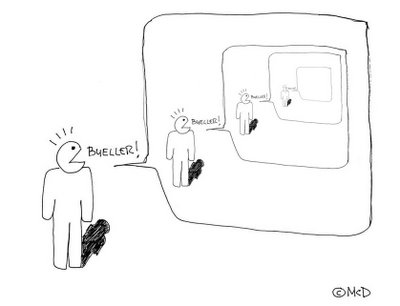

















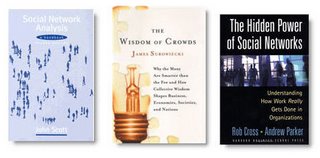
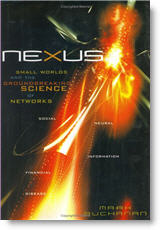



 The relationship between the number of families in the community (with kinship to the core grandparents) and the amount of time available for social interaction on a daily basis is as follows.
The relationship between the number of families in the community (with kinship to the core grandparents) and the amount of time available for social interaction on a daily basis is as follows. What matters here is the overall shape of this curve - as the community size increases the time available for building bonds of cohesion, and social grooming between community members, decreases dramatically. Up to five families there is so much time available that it may seem like the community is truly just "one big family". But, at some point (around 9 families) there is a subtle transition where individuals will have to consciously/unconsciously decide to socially groom and bond-with members of a sub-group (their kin) rather than the community at large.
What matters here is the overall shape of this curve - as the community size increases the time available for building bonds of cohesion, and social grooming between community members, decreases dramatically. Up to five families there is so much time available that it may seem like the community is truly just "one big family". But, at some point (around 9 families) there is a subtle transition where individuals will have to consciously/unconsciously decide to socially groom and bond-with members of a sub-group (their kin) rather than the community at large.
